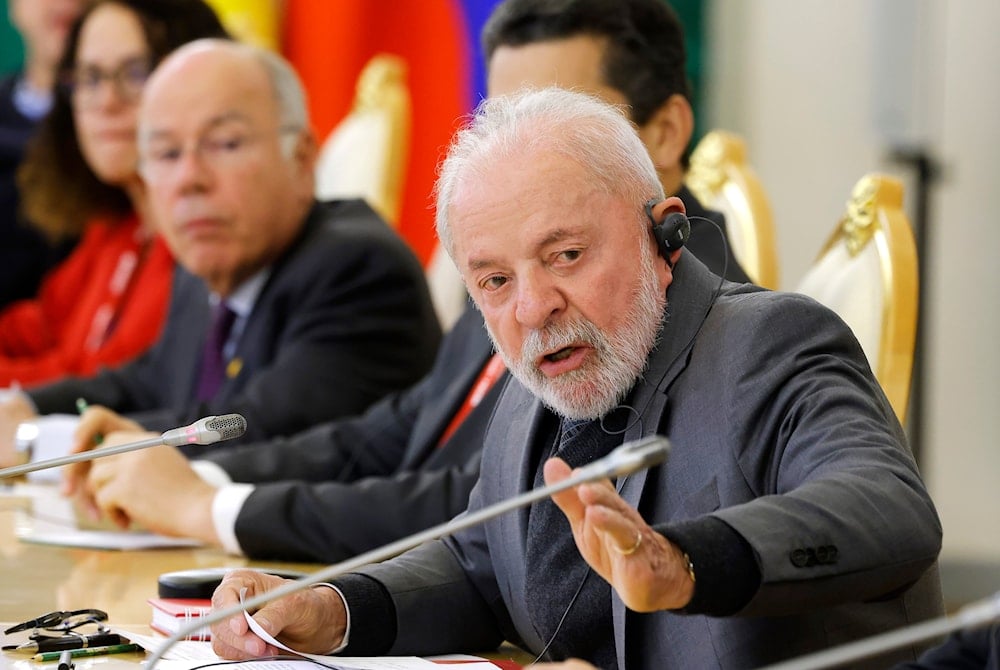Brazil's Lula to visit China ahead of regional summit
Brazilian President Luiz Inacio Lula da Silva begins a five-day state visit to China to deepen trade and diplomatic ties, with key talks expected alongside President Xi Jinping and the CELAC summit.
-

Brazilian President Luiz Inacio Lula da Silva attends a meeting with Russian President Vladimir Putin at the Kremlin in Moscow, Russia, on Friday, May 9, 2025, during celebrations of the 80th anniversary of the Soviet Union's victory over Nazi Germany during the World War II. (Maxim Shemetov/Pool Photo via AP)
Brazilian President Luiz Inacio Lula da Silva will begin a five-day state visit to China on Saturday, as confirmed by Beijing. The trip, which runs through Wednesday, comes at the invitation of Chinese President Xi Jinping and aims to enhance diplomatic and trade ties between the two countries.
Since returning to office in early 2023, Lula da Silva has sought to balance relations with both China and the United States, the two largest economies in the world. China remains Brazil's most significant trading partner, with bilateral trade surpassing $94 billion last year, according to the United Nations Comtrade Database.
Brazil primarily exports soybeans and other agricultural commodities to China, while imports from the Asian powerhouse include semiconductors, telephones, vehicles, and pharmaceuticals. Lula da Silva's China visit underscores efforts to reinforce this strategic economic relationship.
Focus on CELAC summit and regional unity
During the visit, Lula and Xi are expected to participate in a high-level summit between China and the Community of Latin American and Caribbean States (CELAC), a 33-member regional bloc. The gathering is set to focus on economic cooperation, multilateral diplomacy, and coordination on regional challenges.
The trip comes as China seeks to broaden its influence in Latin America, increasingly positioning itself as a rival to the United States in the region. Leaders across the continent have shown growing alignment with Beijing, particularly in response to former US President Donald Trump’s protectionist trade policies.
Two-thirds of Latin American nations have joined China’s Belt and Road Initiative, a massive infrastructure development program that has become a key component of Beijing’s foreign policy. Latin America’s Belt and Road engagement is part of a broader shift, with China now standing as the largest trading partner of Brazil, Peru, Chile, and several others.
China, Brazil deepen trade ties
Last month, a Chinese delegation concluded a visit to Brazil aimed at strengthening China-Brazil trade relations, with a key focus on a proposed railway linking Brazil to Peru’s Chancay mega port on the Pacific coast.
The week-long visit saw officials from China’s Ministry of Transport and the state-owned railway group touring major sites across Brazil. The trip followed agreements signed during Chinese President Xi Jinping’s state visit to Brazil last November.
Among those agreements was a commitment to improving Brazil’s access to the Pacific Ocean, designated as one of the four strategic pillars of bilateral cooperation.
“This marks the beginning of a technical relationship for in-depth studies, particularly in the railway sector,” said João Villaverde, Secretary of Institutional Coordination at Brazil’s Ministry of Planning. “This aligns with our shared strategic pillars.”

 3 Min Read
3 Min Read








